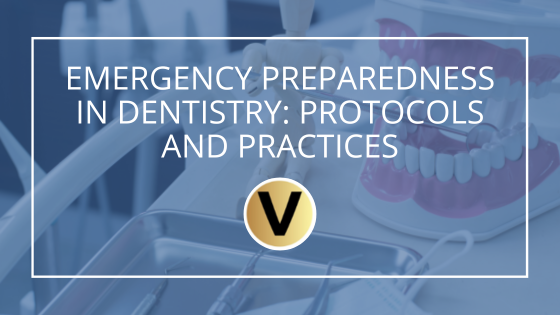In the realm of dental practices, where the focus is primarily on oral health and routine procedures, the significance of emergency preparedness cannot be overstated. This article delves into the crucial aspects of emergency preparedness in dentistry, emphasizing the need for robust protocols to navigate unexpected situations efficiently.
- Introduction: Emergency preparedness stands as the cornerstone of a well-functioning dental practice. Beyond the routine procedures and patient care, the dental team must be equipped to handle unforeseen circumstances that may arise at any moment. This article underscores the imperative nature of having established protocols to address emergencies effectively.
2. Emergency Risk Assessment: Understanding the potential emergencies that could unfold within a dental setting is paramount. From medical emergencies like allergic reactions to situations involving fire or natural disasters, a comprehensive risk assessment is the first step. Different dental environments present unique risks, and a keen awareness of these factors is critical for devising effective emergency response plans.
3. Emergency Action Plans: The crux of emergency preparedness lies in the development of meticulous action plans tailored to dental clinics. These plans should encompass a range of scenarios and be communicated clearly to every team member. Emphasizing communication strategies within the team ensures a synchronized response when emergencies occur, with each member understanding their specific role in executing the plan.
4. Medical Emergencies in Dentistry: Medical emergencies can manifest during dental procedures, requiring swift and precise responses. This section explores common emergencies such as allergic reactions, cardiac events, or respiratory distress. Providing specific protocols for each scenario empowers dental professionals to act decisively, potentially saving lives in critical situations.
5. Dental Facility Safety Measures: A safe dental facility is the foundation of patient care. This section discusses physical safety measures within the dental clinic, including fire safety, evacuation plans, and equipment maintenance. Furthermore, infection control protocols are examined to ensure a secure environment for both patients and staff, especially in the context of contagious diseases.
6. Training and Drills: Regular training sessions for dental staff are highlighted here as an essential component of preparedness. Conducting emergency drills ensures that every team member is familiar with their roles and responsibilities, fostering a sense of readiness that can make a significant difference in real-life emergencies.
7. Communication Strategies: Effective communication is a linchpin during emergencies. This section explores communication protocols within the dental team and with patients. Clear and concise communication is emphasized for mitigating panic, ensuring swift action, and maintaining a sense of control in high-stress situations.
8. Emergency Equipment and Supplies: Detailing the necessary emergency equipment and supplies that should be readily available in dental offices, this section stresses the importance of proper maintenance and regular checks. A well-equipped dental office is better poised to respond effectively to emergencies, minimizing potential harm to patients and staff.
9. Regulatory Compliance: Compliance with regulations and guidelines set forth by dental associations and health authorities is crucial. This section addresses the specific regulations related to emergency preparedness, underscoring their importance for patient safety and legal considerations.
10. Case Studies and Lessons Learned: Real-life case studies and scenarios illustrate the practical significance of emergency preparedness. By delving into experiences where preparedness proved crucial, this section offers valuable insights into lessons learned and improvements made based on these experiences.
11. Ongoing Evaluation and Updates: Continuous evaluation of emergency protocols is stressed in this section, emphasizing the dynamic nature of risks and the need for adaptive responses. Regular updates to emergency plans based on feedback and evolving risks ensure that dental practices remain resilient in the face of ever-changing challenges.
In conclusion, this article synthesizes key points, reinforcing the critical role of emergency preparedness in maintaining a safe and efficient dental practice. The proactive approach outlined here not only safeguards the well-being of patients and staff but also upholds the professional integrity of dental practices in the face of unexpected adversities.

